Imagine a tiny creature with fan-like hands, waving gracefully in the water as it filters out microscopic morsels. This is the Bamboo Shrimp (Atyopsis moluccensis), a fascinating inhabitant of freshwater aquariums that’s sure to captivate any fish keeper.
Table of Contents
These unique shrimp get their name from their native habitat in Southeast Asian streams, where they cling to bamboo and other plants in fast-flowing waters. But don’t let their delicate appearance fool you – these little filter feeders are tough cookies! They belong to the Atyidae family, along with other fan shrimp species.
What makes Bamboo Shrimp so interesting is their specialized feeding method. Instead of scavenging like many other shrimp, they use their feathery fans to catch tiny particles floating by in the current. It’s like watching a miniature underwater ballet as they sway back and forth, gathering their meals.
The scientific name Atyopsis moluccensis tells us a bit about these shrimp. “Atyopsis” refers to their genus of filter-feeding shrimp, while “moluccensis” points to the Moluccas islands in Indonesia where they were first discovered. You might also hear them called Wood Shrimp, Singapore Flower Shrimp, or Asian Filter Shrimp in pet stores.
These peaceful creatures prefer to hang out in the middle to bottom levels of the tank, often perching on plants or decorations where the water flow is strongest. They’re not picky eaters, happily filtering whatever passes by, but they do appreciate some variety in their diet.
One fun fact about Bamboo Shrimp is their impressive size – they can grow up to 3 inches long, making them giants compared to many other freshwater shrimp species! They also have a neat trick up their sleeve (or should we say, under their shell?). When it’s time to molt and grow, they’ll often hide away for a few days until their new exoskeleton hardens.
Interestingly, recent research has shed light on how these shrimp adapt to different conditions. A study found that Bamboo Shrimp larvae can survive in a range of temperatures and salinities, but they’re quite sensitive to extreme conditions. This adaptability likely helps them thrive in their natural habitats, which can vary from freshwater streams to brackish estuaries.
The history of Bamboo Shrimp in the aquarium trade is relatively recent, with their popularity growing over the past few decades as aquarists have discovered their unique charm and helpful filtering abilities. Today, they’re beloved by many for their peaceful nature and the lively movement they bring to community tanks.
So next time you’re looking to add some life to your aquarium, consider the humble yet fascinating Bamboo Shrimp. These little filter-feeders might just become your new favorite aquatic friends!
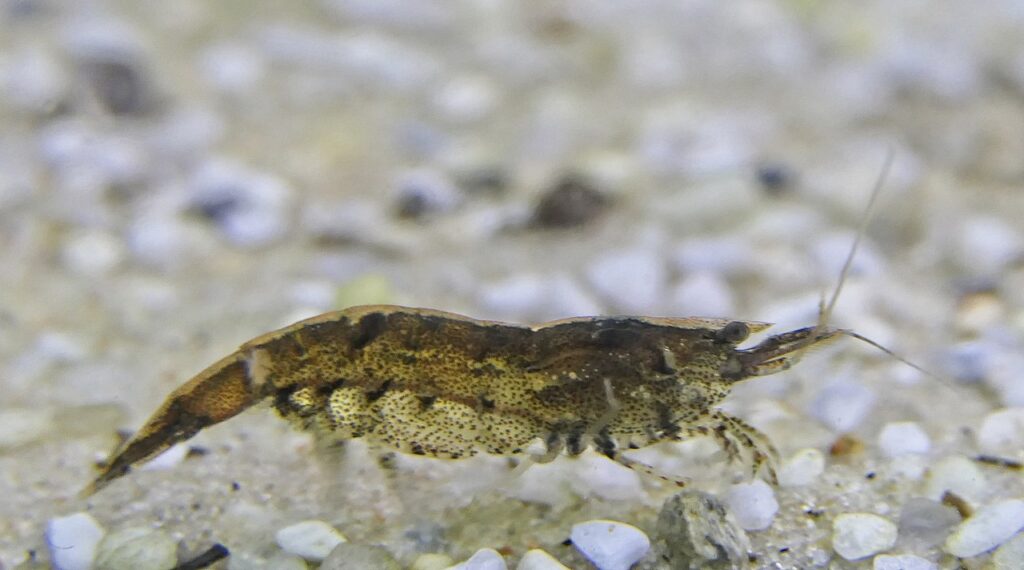
Bamboo Shrimp Key Information
The Bamboo Shrimp, with its captivating appearance, boasts a range of colors that can mesmerize any aquarium enthusiast. These fascinating creatures typically display a translucent body with hues ranging from light brown to reddish-brown. Some individuals may exhibit subtle stripes or patterns along their bodies, while others showcase a more uniform coloration. Their most striking feature, the fan-like appendages used for feeding, often appear as a lighter shade, creating a beautiful contrast against their body. The color intensity can vary based on factors such as diet, stress levels, and overall health, making each Bamboo Shrimp a unique addition to your aquatic world.
| Family | Atyidae |
| Origin | Southeast Asia, including Indonesia, Thailand, and Malaysia |
| Price | $5 – $15 USD |
| Common Names | Wood Shrimp, Singapore Flower Shrimp, Asian Filter Shrimp |
| Variants | No distinct variants, but color variations exist |
| Ideal Tank Size | 20 gallons or larger |
| Water Parameters | Temperature: 70-78°F, pH: 6.5-7.5, Hardness: 5-15 dGH |
| Lifespan | 2-3 years |
| Full Size | Up to 3 inches |
| Natural Environment | Fast-flowing streams and rivers with rocky substrates |
| Behavior | Peaceful, primarily a bottom to middle dweller |
| Habitat Preference | Areas with strong water current, often on elevated surfaces |
| Aquarium Decoration | Driftwood, rocks, plants for perching and hiding |
| Ideal Tank Mates | Peaceful community fish, other non-aggressive shrimp species |
| Fish to Avoid | Large, aggressive, or predatory fish |
| Best Foods/Diet | Omnivore, primarily filter-feeds on microorganisms and detritus |
| Disease | Susceptible to bacterial infections and parasites |
| Sex-switch | No known sex-switching behavior |
| Gender Differences | Difficult to distinguish, females may be slightly larger |
| Care Level | Moderate |
| Breeding Level | Difficult in home aquariums, requires brackish water for larval development |
Ideal Tank Mates for Bamboo Shrimp
Bamboo Shrimp are fascinating creatures that thrive in peaceful community tanks. Their unique filter-feeding behavior and gentle nature make them compatible with a variety of tank mates. Let’s explore some ideal companions for your Bamboo Shrimp:
Before we dive into the list of compatible tank mates, it’s important to note that these species have been chosen for their peaceful nature, similar water parameter requirements, and low likelihood of competing with or harming Bamboo Shrimp. Each of these fish brings its own unique characteristics to the aquarium, creating a diverse and harmonious community.
Neon Tetra (Paracheirodon innesi)
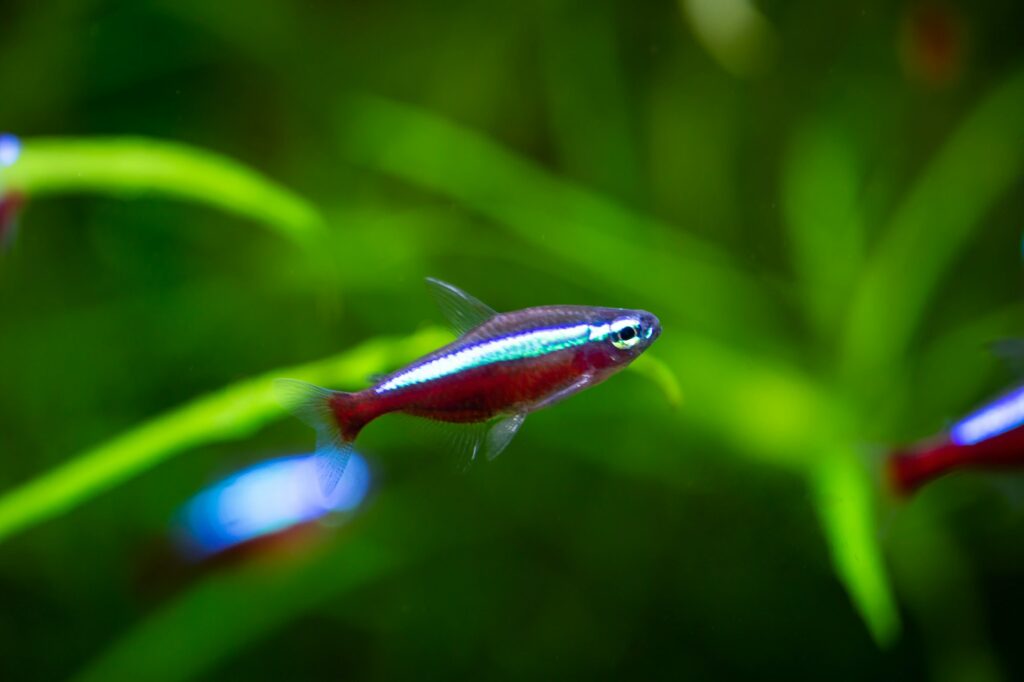
Neon Tetras are a perfect match for Bamboo Shrimp due to their small size and peaceful demeanor. These vibrant little fish add a splash of color to the aquarium without disturbing the shrimp’s filter-feeding activities. Their schooling behavior creates an engaging display that complements the serene presence of Bamboo Shrimp.
| Common/Market Names | Price Range | Care Level | Behavior | Life Span | Max Size |
|---|---|---|---|---|---|
| Neon Tetra | $2 – $5 | Easy | Peaceful | 5-8 years | 1.5 inches |
Corydoras Catfish (Corydoras spp.)
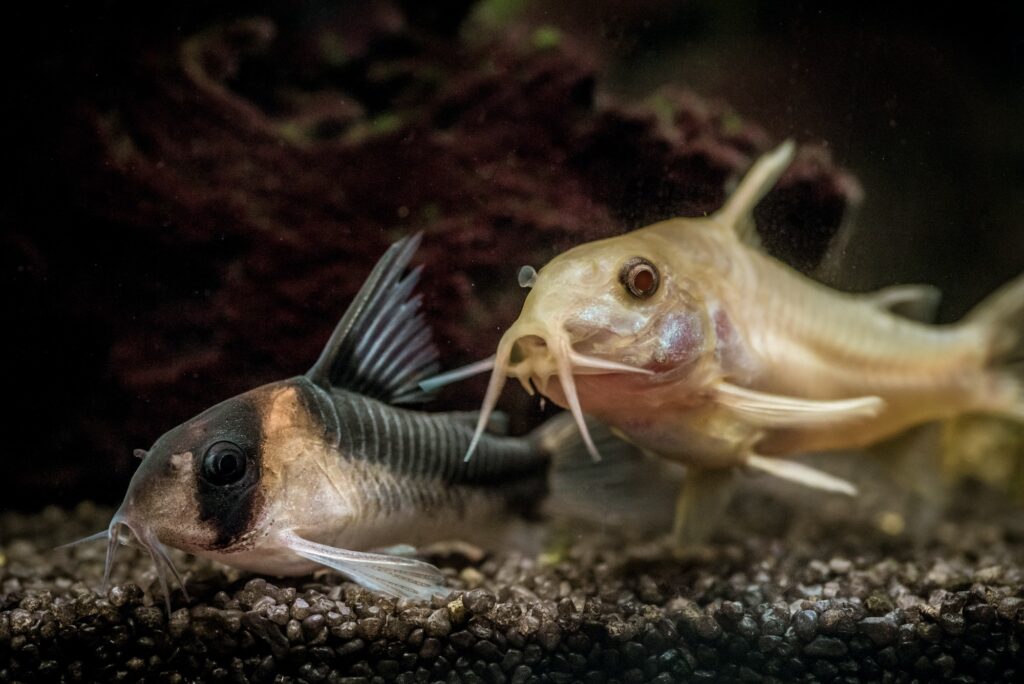
Corydoras Catfish are excellent bottom-dwellers that share the Bamboo Shrimp’s preference for clean, well-maintained tanks. These armored catfish scavenge for food on the substrate, which helps keep the tank clean without competing with the shrimp for food particles in the water column.
| Common/Market Names | Price Range | Care Level | Behavior | Life Span | Max Size |
|---|---|---|---|---|---|
| Cory Catfish, Corys | $3 – $10 | Easy | Peaceful | 3-5 years | 2-3 inches |
Cherry Barb (Puntius titteya)
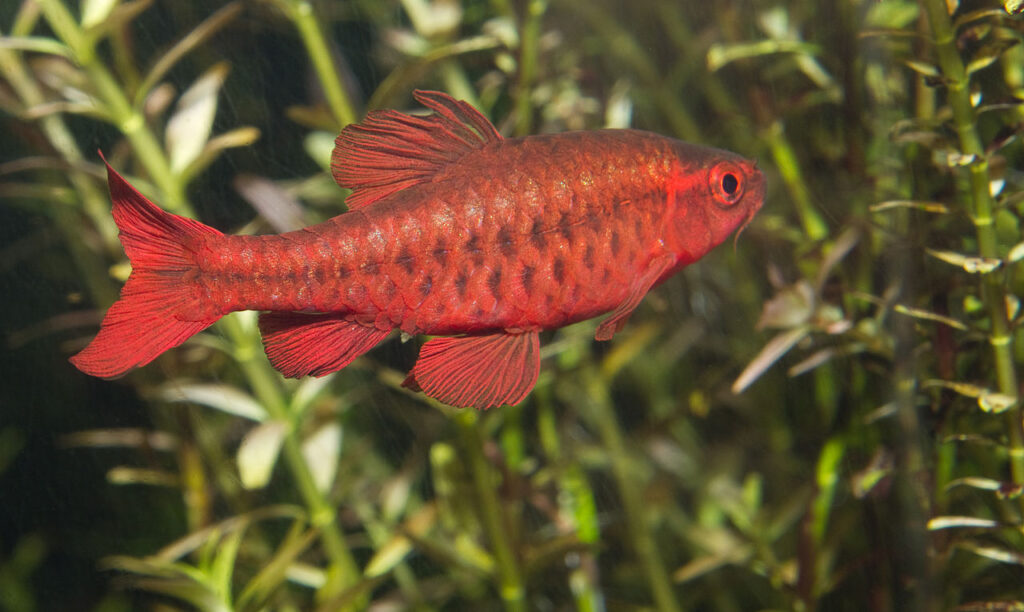
Cherry Barbs are a great choice for a Bamboo Shrimp tank due to their calm nature and small size. These colorful fish add movement to the middle water column without disturbing the shrimp’s feeding areas. Their peaceful temperament ensures they won’t harass or stress the Bamboo Shrimp.
| Common/Market Names | Price Range | Care Level | Behavior | Life Span | Max Size |
|---|---|---|---|---|---|
| Cherry Barb | $3 – $6 | Easy | Peaceful | 4-6 years | 2 inches |
Otocinclus Catfish (Otocinclus spp.)
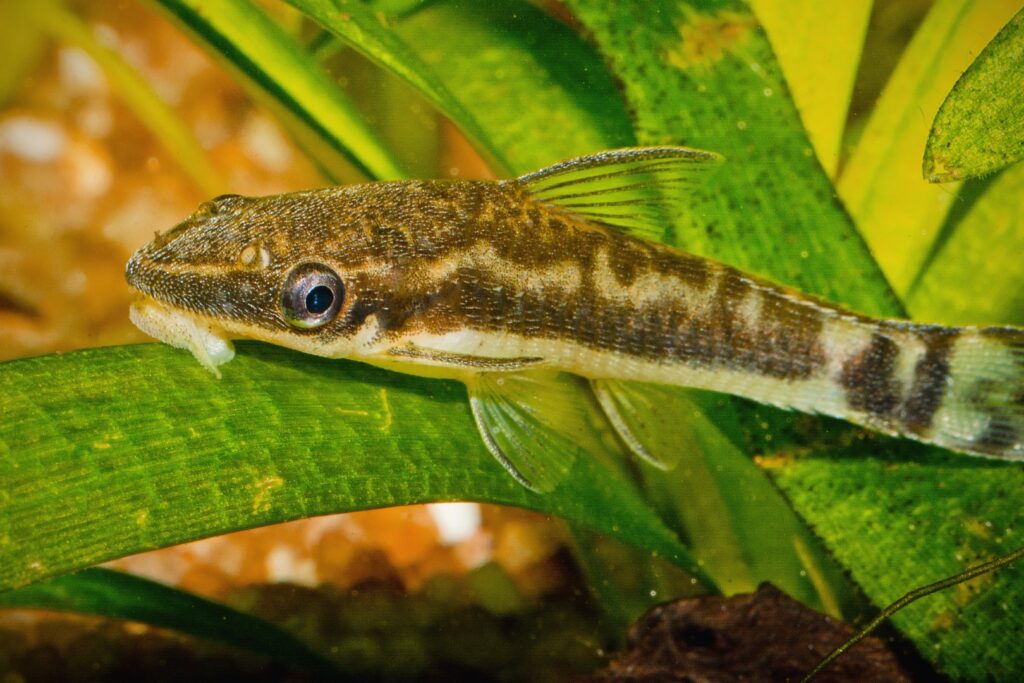
Otocinclus Catfish are perfect tank mates for Bamboo Shrimp as they occupy a different ecological niche. While Bamboo Shrimp filter feed, Otocinclus graze on algae, helping to keep the tank clean. Their small size and peaceful nature make them ideal companions.
| Common/Market Names | Price Range | Care Level | Behavior | Life Span | Max Size |
|---|---|---|---|---|---|
| Oto Catfish, Otos | $2 – $5 | Moderate | Peaceful | 3-5 years | 2 inches |
Harlequin Rasbora (Trigonostigma heteromorpha)
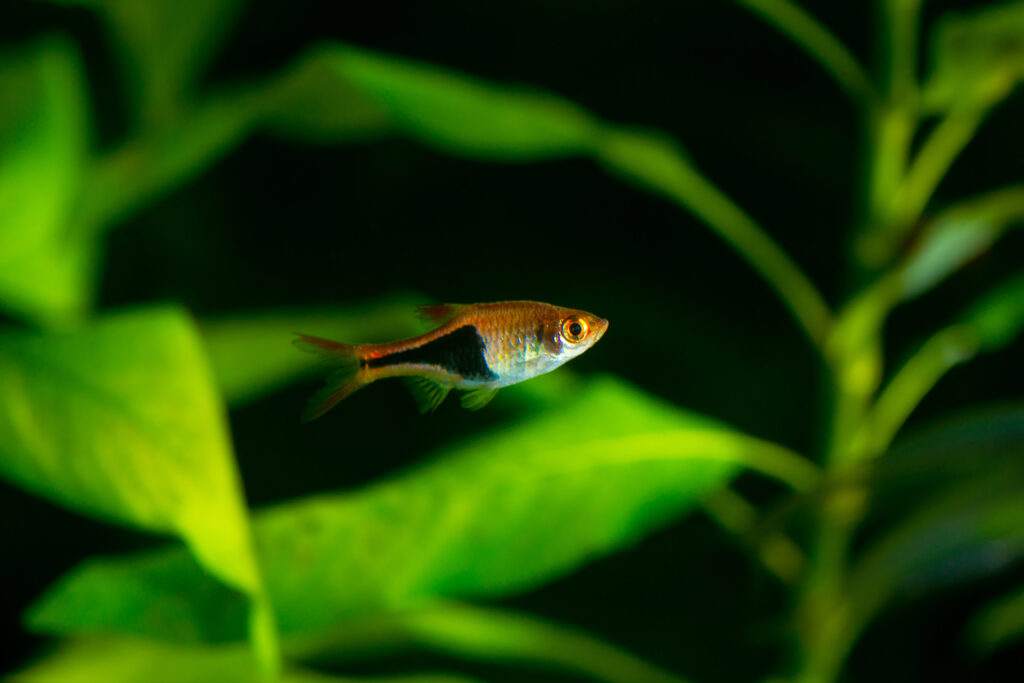
Harlequin Rasboras are an excellent choice for a Bamboo Shrimp tank due to their small size and peaceful nature. These elegant fish occupy the middle to upper water column, creating a visually appealing contrast to the bottom-dwelling shrimp.
| Common/Market Names | Price Range | Care Level | Behavior | Life Span | Max Size |
|---|---|---|---|---|---|
| Harlequin Rasbora | $2 – $5 | Easy | Peaceful | 5-8 years | 2 inches |
Celestial Pearl Danio (Danio margaritatus)
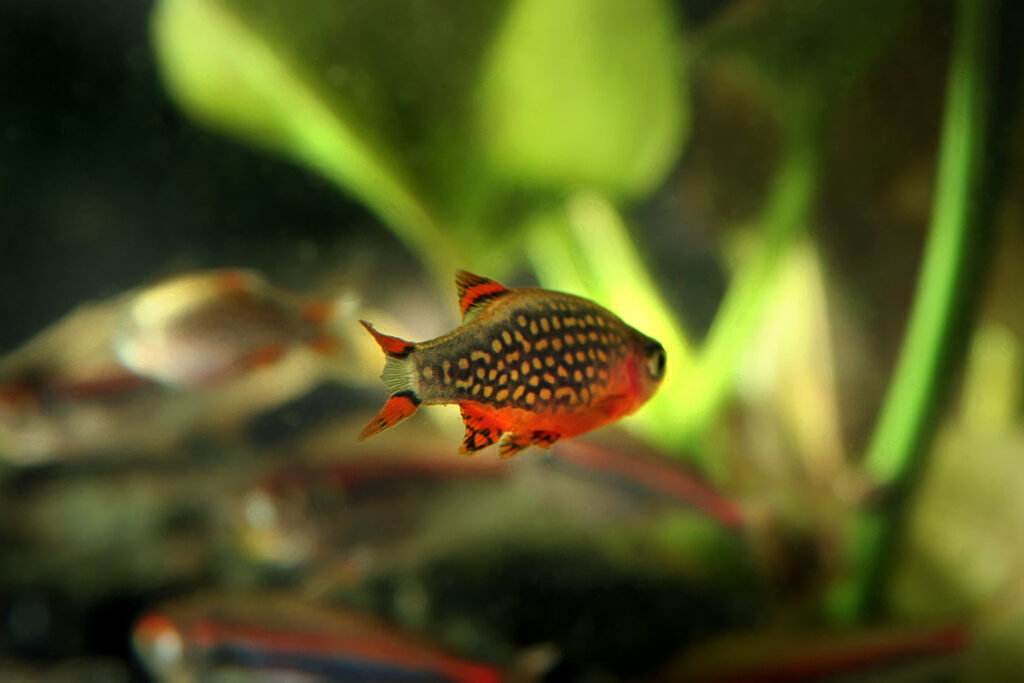
Celestial Pearl Danios are a stunning addition to a Bamboo Shrimp tank. Their tiny size and peaceful temperament make them ideal companions. These micro fish add a touch of elegance to the upper water column without disturbing the shrimp’s activities.
| Common/Market Names | Price Range | Care Level | Behavior | Life Span | Max Size |
|---|---|---|---|---|---|
| Galaxy Rasbora | $5 – $10 | Moderate | Peaceful | 3-5 years | 1 inch |
Kuhli Loach (Pangio kuhlii)
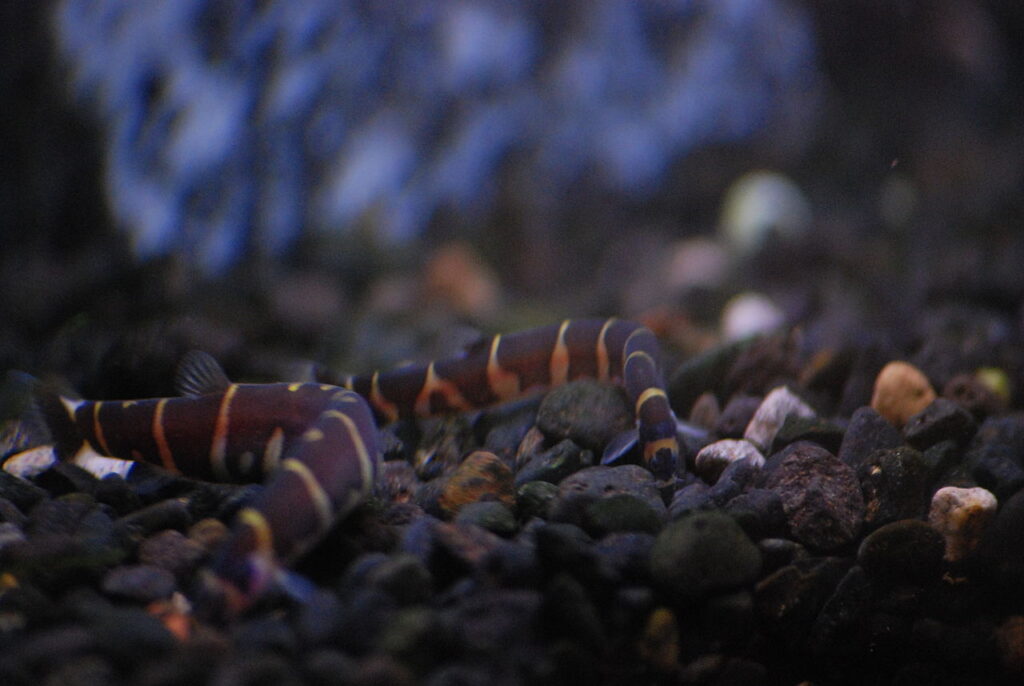
Kuhli Loaches are fascinating bottom-dwellers that coexist peacefully with Bamboo Shrimp. These eel-like fish add interest to the lower levels of the tank without competing for food or space with the shrimp. Their nocturnal habits complement the diurnal nature of Bamboo Shrimp.
| Common/Market Names | Price Range | Care Level | Behavior | Life Span | Max Size |
|---|---|---|---|---|---|
| Coolie Loach | $3 – $8 | Easy | Peaceful | 10+ years | 4 inches |
Dwarf Gourami (Trichogaster lalius)
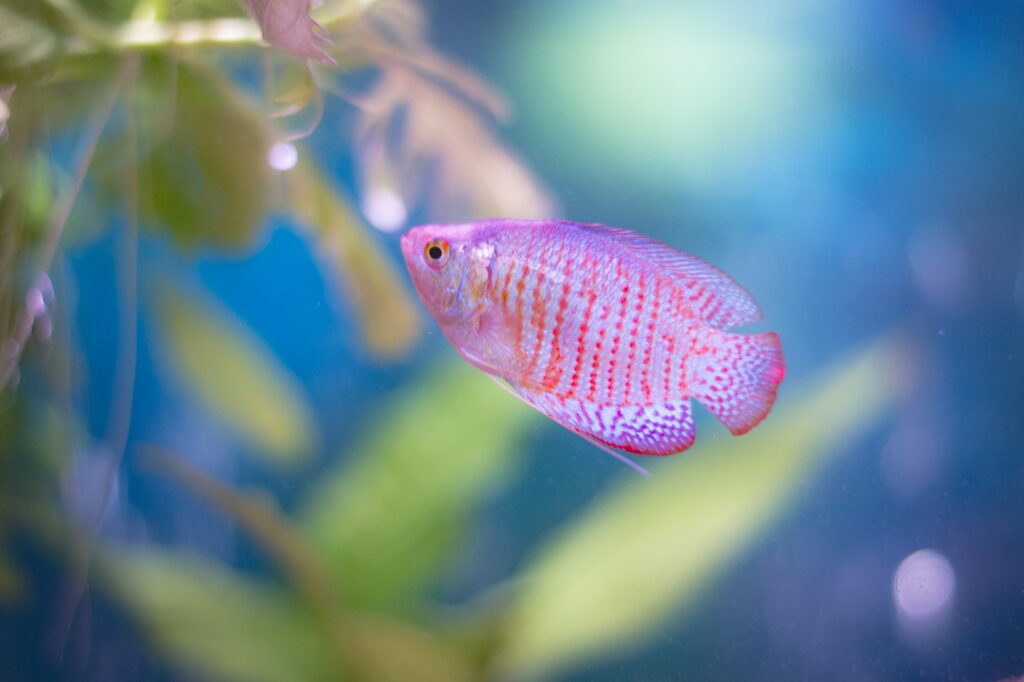
Dwarf Gouramis are a colorful and peaceful addition to a Bamboo Shrimp tank. These labyrinth fish occupy the middle to upper water column, adding a splash of color without disturbing the shrimp. Their calm demeanor makes them excellent community fish.
| Common/Market Names | Price Range | Care Level | Behavior | Life Span | Max Size |
|---|---|---|---|---|---|
| Flame Gourami | $5 – $10 | Easy | Peaceful | 4-6 years | 3 inches |
Ember Tetra (Hyphessobrycon amandae)
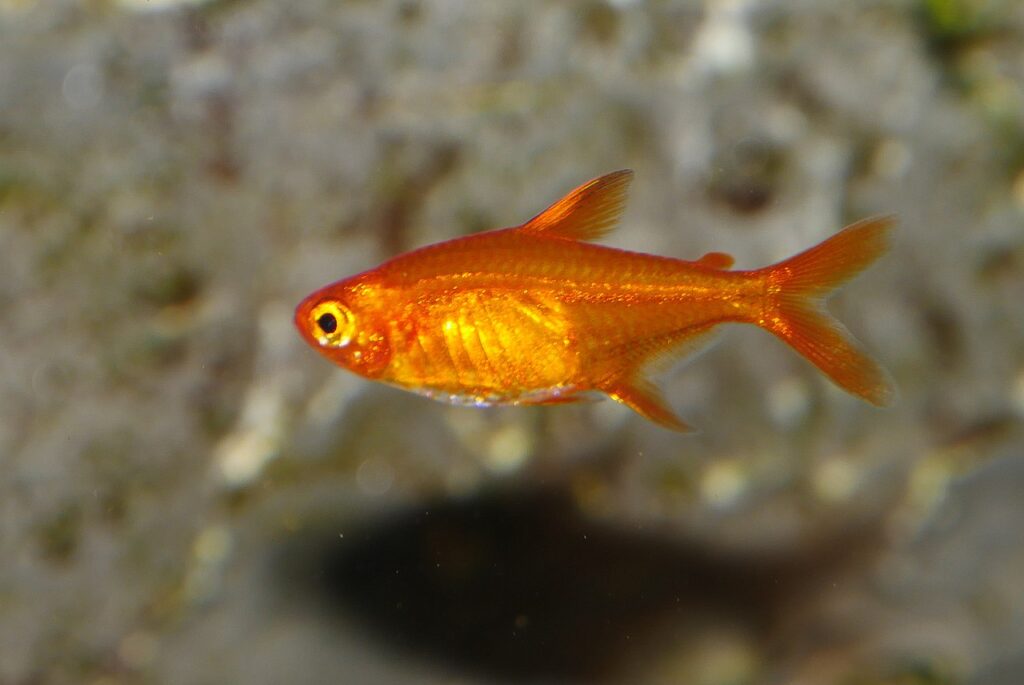
Ember Tetras are tiny, vibrant fish that make excellent companions for Bamboo Shrimp. Their small size ensures they won’t intimidate the shrimp, while their schooling behavior creates an engaging display in the upper water column.
| Common/Market Names | Price Range | Care Level | Behavior | Life Span | Max Size |
|---|---|---|---|---|---|
| Fire Tetra | $3 – $5 | Easy | Peaceful | 2-4 years | 0.8 inches |
Amano Shrimp (Caridina multidentata)
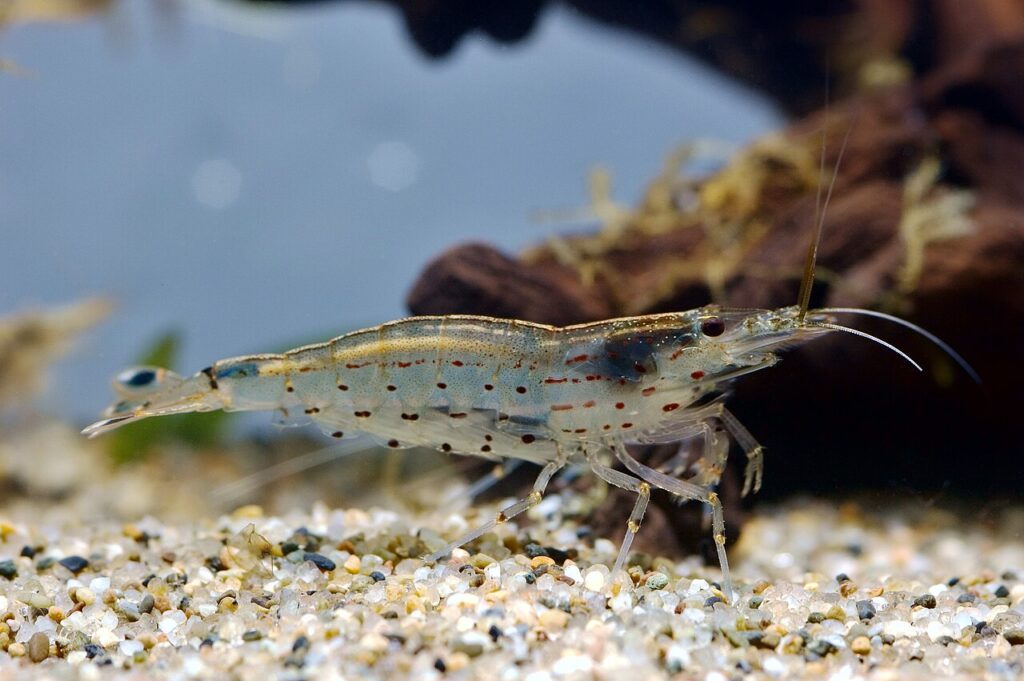
Amano Shrimp are not fish, but they make excellent tank mates for Bamboo Shrimp. These industrious algae eaters occupy a different niche than Bamboo Shrimp, focusing on cleaning surfaces rather than filter feeding. Their presence can actually benefit Bamboo Shrimp by releasing tiny food particles into the water during their cleaning activities.
| Common/Market Names | Price Range | Care Level | Behavior | Life Span | Max Size |
|---|---|---|---|---|---|
| Algae Eating Shrimp | $3 – $8 | Easy | Peaceful | 2-3 years | 2 inches |
FAQs about Bamboo Shrimp
How often do Bamboo Shrimp molt?
Bamboo Shrimp typically molt every 3-8 weeks, depending on their age and growth rate. Younger shrimp molt more frequently as they grow rapidly. During molting, they may hide for a day or two until their new exoskeleton hardens.
Can Bamboo Shrimp live in brackish water?
While adult Bamboo Shrimp thrive in freshwater, their larvae require brackish conditions to develop. In the wild, they migrate to estuaries for breeding. However, in home aquariums, they are best kept in freshwater environments.
Do Bamboo Shrimp need special food?
Bamboo Shrimp primarily filter feed on microscopic particles in the water. However, in aquariums with low natural food availability, you can supplement their diet with powdered foods designed for filter feeders or by crushing regular fish flakes into a fine powder.
How can I tell if my Bamboo Shrimp is healthy?
A healthy Bamboo Shrimp will be active, regularly using its fan-like appendages to filter feed. Their color should be vibrant, and they should molt successfully. If a shrimp is lethargic or not filter feeding, it may indicate stress or illness.
Can Bamboo Shrimp climb out of the aquarium?
While not as prone to escaping as some other shrimp species, Bamboo Shrimp can climb out if water conditions are poor or if they’re stressed. It’s advisable to keep a tight-fitting lid on your aquarium to prevent any potential escapes.
How many Bamboo Shrimp should be kept together?
Bamboo Shrimp are social creatures and do well in small groups. A good rule of thumb is to keep 3-5 Bamboo Shrimp in a 20-gallon tank. Ensure there’s enough water flow and feeding spots for all.
Will Bamboo Shrimp eat my aquarium plants?
No, Bamboo Shrimp are not known to eat or damage aquarium plants. They may perch on plants to filter feed, but they won’t consume the plant matter itself. In fact, they can help keep plants clean by removing debris.
How do I create the right water flow for Bamboo Shrimp?
Bamboo Shrimp prefer moderate to strong water flow. You can achieve this by using a hang-on-back filter, canister filter, or powerhead. Aim the output towards areas where you want the shrimp to gather for feeding.
Can Bamboo Shrimp live with other shrimp species?
Yes, Bamboo Shrimp can coexist peacefully with other non-aggressive shrimp species like Cherry Shrimp or Amano Shrimp. Their different feeding habits mean they won’t compete for resources.
How do I acclimate Bamboo Shrimp to a new tank?
Acclimate Bamboo Shrimp slowly over 1-2 hours using the drip method. This allows them to adjust to new water parameters gradually, reducing stress and increasing their chances of successful adaptation to their new home.